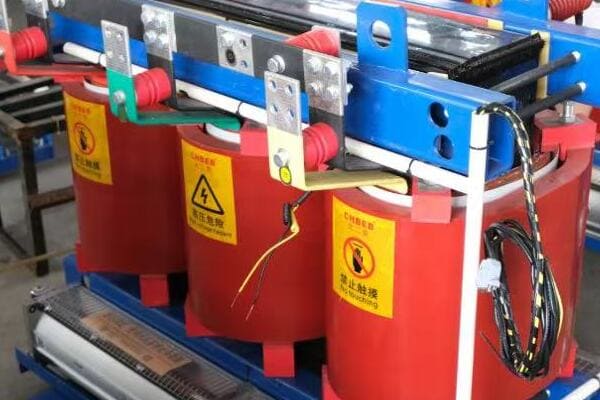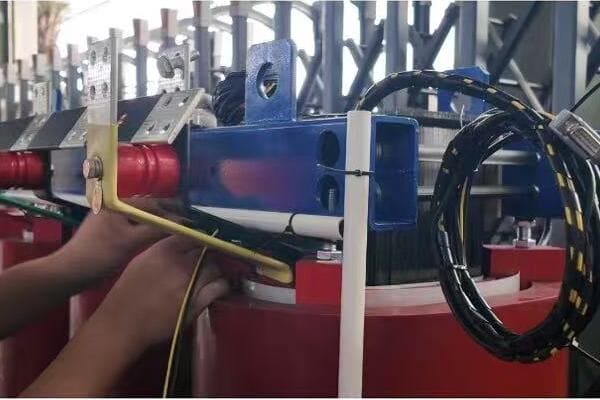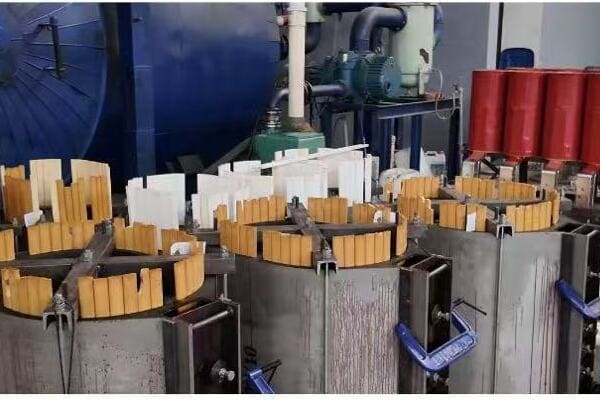Oil Immersed Transformer Maintenance: Essential Guide for Optimal Performance?
Are you worried about the reliability of your oil immersed transformer? You’re not alone. Many engineers and facility managers struggle with maintaining these critical components of our power systems. But don’t worry, I’m here to help.
Proper maintenance of oil immersed transformers is crucial for ensuring their longevity and efficiency. This involves regular inspections, oil testing, cleaning, and safety precautions. By following a comprehensive maintenance routine, you can prevent unexpected failures, improve performance, and extend the life of your transformer.

As someone who has worked with oil immersed transformers for years, I’ve seen firsthand how proper maintenance can make all the difference. In this article, I’ll guide you through the essential maintenance procedures and precautions that will keep your transformer running smoothly. Let’s dive in and explore how to keep your electrical giant in top shape.
How to Perform Oil Immersed Transformer Maintenance: Step-by-Step Guide?
Have you ever felt overwhelmed by the complexity of transformer maintenance? You’re not alone. Many technicians find the process daunting, but with the right approach, it can be straightforward and effective.
Maintaining an oil immersed transformer involves a series of systematic steps: safety preparations, visual inspections, oil testing, component checks, and cleaning. Each step is crucial for ensuring the transformer’s reliability, efficiency, and longevity. Regular maintenance can prevent unexpected failures and extend the transformer’s operational life.

I remember my first time performing a full maintenance routine on a large oil immersed transformer. It was intimidating, but following a step-by-step approach made the process manageable. Let me walk you through the essential steps to maintain your transformer effectively.
Safety First: Preparing for Maintenance
Before you even touch the transformer, safety should be your top priority:
-
Power Isolation:
- Disconnect the low-voltage side circuit breaker.
- Open the high-voltage side load switch.
- Confirm disconnection and close the grounding knife.
- Hang appropriate warning tags on all switches.
-
Verification of Power-Off State:
- Use a high-voltage electroscope to confirm the transformer is de-energized.
- Never skip this step – it could save your life.
-
Personal Protective Equipment (PPE):
- Wear insulated shoes and gloves.
- Use appropriate eye protection.
- Wear flame-resistant clothing if required.
I once witnessed a near-miss incident where a technician almost started work without proper isolation. Always double-check your safety measures.
Visual Inspection: The Devil is in the Details
A thorough visual inspection can catch many issues before they become serious problems:
-
External Components Check:
- Inspect the transformer shell for any deformations or damage.
- Check porcelain bushings for cracks or chips.
- Examine lead wires for signs of wear or damage.
-
Oil Level and Leaks:
- Check the oil level in the sight glass.
- Look for any signs of oil leakage around gaskets and seals.
- If you spot leaks, note their location for later repair.
-
Silica Gel Desiccant:
- Check the color of the silica gel in the breather.
- Blue indicates good condition, pink means it needs replacement.
-
Auxiliary Equipment:
- Inspect cooling fans and radiators for proper operation.
- Check the condition of temperature gauges and pressure relief devices.
Here’s a quick checklist for visual inspection:
| Component | What to Look For |
|---|---|
| Shell | Dents, rust, paint damage |
| Bushings | Cracks, chips, oil leaks |
| Oil Level | Within acceptable range |
| Silica Gel | Color (blue is good, pink needs replacement) |
| Cooling System | Fan operation, radiator cleanliness |
Oil Testing: The Lifeblood of Your Transformer
Oil in a transformer is more than just a coolant; it’s a key component of the insulation system:
-
Sampling:
- Take oil samples from designated valves.
- Use clean, dry containers to avoid contamination.
-
Dielectric Strength Test:
- Measures the oil’s ability to withstand electrical stress.
- Should be performed at least annually.
-
Dissolved Gas Analysis (DGA):
- Detects gases produced by oil and paper degradation.
- Can indicate potential faults before they become serious.
-
Acidity Test:
- Measures the acid content of the oil.
- High acidity can indicate oil degradation.
-
Moisture Content Test:
- Excessive moisture can severely degrade insulation.
- Should be kept below 20 ppm for most transformers.
I once detected an early-stage winding fault through DGA that would have led to a catastrophic failure if left unchecked. Regular oil testing is your best early warning system.
Component Checks: Ensuring Everything’s in Working Order
After visual inspection and oil testing, it’s time to check individual components:
-
Bushings:
- Clean the porcelain surfaces.
- Check for proper tightness of connections.
- Perform power factor tests if equipment is available.
-
Cooling System:
- Clean radiator fins.
- Check fan motors for proper operation.
- Lubricate bearings if necessary.
-
Gauges and Sensors:
- Verify accuracy of temperature gauges.
- Check operation of pressure relief devices.
- Calibrate sensors if needed.
-
Tap Changer (if equipped):
- Check for proper operation through all positions.
- Inspect contacts for wear.
- Verify oil level in the tap changer compartment.
Cleaning and Final Checks
The final steps in your maintenance routine:
-
General Cleaning:
- Wipe down the transformer body and bushings.
- Clean any accumulated dust or debris.
- Ensure all cooling passages are clear.
-
Tightness Check:
- Verify all bolted connections are properly tightened.
- Check gasket compression on removable parts.
-
Grounding:
- Inspect and clean all grounding connections.
- Measure grounding resistance if possible.
-
Documentation:
- Record all maintenance activities performed.
- Note any abnormalities or items needing future attention.
- Update maintenance logs and schedules.
Remember, thorough documentation is crucial. I once avoided a major dispute by referring to detailed maintenance records that proved we had followed all necessary procedures.
By following these steps, you’ll ensure that your oil immersed transformer remains in top condition. Regular, thorough maintenance not only prevents unexpected failures but can also extend the life of your transformer significantly. It’s an investment of time and effort that pays off in improved reliability and reduced long-term costs.
What Are the Key Precautions for Oil Immersed Transformer Maintenance?
Have you ever felt that sinking feeling when something goes wrong during maintenance? It’s a common experience, but one that can be avoided with the right precautions. When it comes to oil immersed transformers, safety and care are paramount.
Key precautions for oil immersed transformer maintenance include ensuring proper power isolation, using appropriate personal protective equipment, maintaining a clean work environment, handling oil carefully to prevent spills, and following all safety protocols. These measures protect both the technicians and the equipment, ensuring safe and effective maintenance.

I once witnessed a maintenance job go awry due to overlooked precautions. It was a stark reminder of why these safety measures are so crucial. Let’s explore the key precautions you should always keep in mind when maintaining oil immersed transformers.
Environmental Considerations: Setting the Stage for Safe Maintenance
The environment around your transformer plays a crucial role in maintenance safety:
-
Location Requirements:
- Ensure the transformer is in a non-corrosive environment.
- Ambient temperature should be between -30°C to +40°C.
- Wind speed should not exceed 350 m/s (though this seems unusually high and might be a typo in the original text – typical safe wind speeds are much lower).
-
Ventilation:
- Ensure proper ventilation in indoor locations.
- Be aware of confined space regulations if applicable.
-
Lighting:
- Provide adequate lighting for detailed inspections.
- Use explosion-proof lighting in areas with potential oil vapors.
-
Work Area Preparation:
- Clear the area of unnecessary equipment and personnel.
- Set up barriers to prevent unauthorized access.
I once had to postpone maintenance due to unexpected high winds. It’s always better to wait for safe conditions than to risk an accident.
Personal Protective Equipment (PPE): Your Last Line of Defense
Never underestimate the importance of proper PPE:
-
Insulated Footwear:
- Wear boots with electrical insulation properties.
- Ensure they’re free from metal parts.
-
Insulated Gloves:
- Use gloves rated for the voltage level you’re working with.
- Inspect gloves for holes or damage before each use.
-
Eye Protection:
- Wear safety glasses or goggles to protect against oil splashes.
- Consider a face shield for additional protection.
-
Flame-Resistant Clothing:
- Wear FR-rated coveralls when working with energized equipment.
- Ensure clothing fits properly to avoid snagging.
Here’s a quick PPE checklist:
| PPE Item | Requirement | Inspection Frequency |
|---|---|---|
| Insulated Boots | Electrical rating appropriate for work | Before each use |
| Insulated Gloves | Voltage rating meets or exceeds system voltage | Before each use |
| Safety Glasses | ANSI Z87.1 compliant | Daily |
| FR Clothing | NFPA 70E compliant | Before each use |
Electrical Safety: Respecting the Power
Electrical safety is paramount when working with transformers:
-
Power Isolation:
- Always follow proper lockout/tagout procedures.
- Use a personal lock and tag on isolation points.
-
Verification of De-energized State:
- Use a properly rated voltage detector.
- Test the detector on a known live source before and after use.
-
Grounding:
- Apply temporary grounding cables where necessary.
- Ensure proper grounding of test equipment.
-
Prevention of Backfeed:
- Be aware of potential sources of backfeed.
- Take steps to prevent inadvertent re-energization.
I once encountered a situation where a generator backfed into a supposedly de-energized system. Always be vigilant about unexpected sources of power.
Oil Handling: Respect the Lifeblood of Your Transformer
Proper oil handling is crucial for both safety and environmental reasons:
-
Spill Prevention:
- Use drip trays when taking oil samples or performing maintenance.
- Have spill kits readily available.
-
Oil Storage:
- Store oil in appropriate, sealed containers.
- Keep oil away from sources of contamination.
-
Disposal:
- Follow local regulations for oil disposal.
- Use licensed disposal companies for large quantities.
-
Fire Safety:
- Keep fire extinguishers rated for electrical fires nearby.
- Be aware of the flash point of transformer oil.
Documentation and Communication: The Often Overlooked Precaution
Proper documentation and communication can prevent many issues:
-
Maintenance Records:
- Keep detailed records of all maintenance activities.
- Document any abnormalities or concerns.
-
Communication:
- Ensure all team members are briefed on the maintenance plan.
- Use clear communication during the maintenance process.
-
Emergency Procedures:
- Have clear emergency procedures in place.
- Ensure all team members know how to respond to potential incidents.
-
Post-Maintenance Reporting:
- Provide clear reports on work completed and any issues found.
- Communicate any follow-up actions needed.
Remember, good documentation isn’t just about compliance – it’s about safety and continuity. I once resolved a dispute over a transformer failure by referring to our detailed maintenance logs, which proved we had followed all necessary procedures.
By following these precautions, you’ll create a safer environment for both personnel and equipment during oil immersed transformer maintenance. Safety isn’t just about avoiding accidents; it’s about creating a culture of care and attention to detail that ensures the longevity and reliability of your electrical systems.
Conclusion
Proper maintenance of oil immersed transformers is crucial for their longevity and efficiency. By following a systematic approach to maintenance and adhering to key safety precautions, you can ensure the reliable operation of your transformer, prevent unexpected failures, and create a safer working environment. Remember, a well-maintained transformer is the backbone of a stable electrical system.
Free CHBEB Transformer Catalog Download
Get the full range of CHBEB transformers in one catalog.
Includes oil-immersed, dry-type, pad-mounted, and custom solutions.
Quick Message
Request A free quote
We'd like to work with you
- +86 15558785111
- [email protected]
- +86 15558785111
What We Do
CHINA BEI ER BIAN (CHBEB) GROUP, with 218 million in registered capital, originated from Beijing Beierbian Transformer Group. Headquartered in Beijing for R&D, it operates major production bases in Nanjing and Yueqing, producing high-quality products.
Latest Product
address
BeiJing
No 3,RongJing East Road,BeiJing Economic Technological Development Area,BeiJing,China
JiangSu
No 7️Xiangfeng Road,Jiangning,NanJing,JiangSu,China
WenZhou
No.211, Wei 16 Road, Industrial Zone, Yueqing, Wenzhou, Zhejiang, China.
XiangYang Industrial Zone ,YueQing,WenZhou,ZheJiang,China
contact us
- [email protected]
- +86 13057780111
- +86 13057780111
- +86 15558785111
Copyright © Bei Er Bian Group


